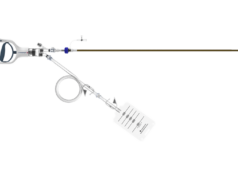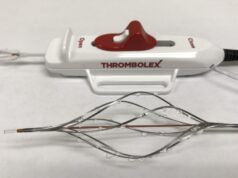
Findings from the first international randomised controlled trial (RCT) to compare patient outcomes following treatment with large-bore mechanical thrombectomy (LBMT) versus catheter-directed thrombolysis (CDT) for intermediate-risk pulmonary embolism (PE) found that LBMT is superior with respect to the hierarchically-tested aggregated outcome of all-cause mortality, intracranial haemorrhage, major bleeding, clinical deterioration and/or escalation to bailout therapy, and postprocedural intensive care unit (ICU) admission and length of stay.
Findings were reported today at TCT 2024 (27–30 October, Washington, DC, USA) the annual scientific symposium of the Cardiovascular Research Foundation (CRF). Results were also published simultaneously in Circulation.
Over the last decade, catheter-based interventions for intermediate- and high-risk PE, including catheter-directed thrombolysis (CDT) and large-bore mechanical thrombectomy (LBMT), have been adopted to avoid the bleeding risks of systemic thrombolysis. Observational studies of CDT and LBMT have separately reported positive outcomes but there are no prior RCTs directly comparing these two interventional strategies.
From February 2022 to February 2024, a total of 550 haemodynamically stable adults with acute PE, right ventricular dysfunction and at least one additional clinical risk factor for adverse outcomes who did not have absolute contraindications to thrombolytics were randomised in a 1:1 allocation to LBMT with the FlowTriever device (Inari Medical; n=274) or CDT (n=276). The trial was conducted at 57 sites in the USA, Germany and Switzerland. Follow-up was performed at 24-hours, discharge (or after seven days), and at 30-days.
The primary endpoint was a hierarchal win ratio of five outcomes including all-cause mortality, intracranial haemorrhage, major bleeding per International Society on Thrombosis and Haemostasi (ISTH) definition, clinical deterioration and/or escalation to bailout therapy, and postprocedural ICU admission and length of stay. These five outcomes were assessed at discharge or seven days post procedure, whichever came sooner. The primary endpoint favoured LBMT over CDT with a corresponding win ratio of 5.01 (95% confidence interval [CI]: 3.68–6.97, p<0.001).
Among the individual components of these, the rates of all-cause mortality, intracranial haemorrhage, and major bleeding were similar between groups. Less than half of LBMT patients were admitted to the ICU following the procedure compared with nearly all CDT patients (41.6% vs. 98.6%; p<0.001). Although this occurred infrequently, there was also a lower rate of clinical deterioration and/or escalation to bailout therapy with LBMT (1.8%) compared with CDT (5.4%, p=0.038).
At 24 hours, LBMT patients also showed greater improvement in several symptom scores. In addition, the total hospital stay was shorter with LBMT compared to CDT (4.5±2.8 vs. 5.3±3.9 overnights; p=0.002) and fewer LBMT patients were readmitted to the hospital within 30 days (3.2% vs. 7.9%; p=0.03). All-cause mortality within 30 days was similar between both groups (0.4% vs. 0.8%; p=0.62).
“The PEERLESS results represent the most robust evidence comparing two methods of intervention for pulmonary embolism to date,” said Wissam A Jaber (Emory University Hospital, Atlanta, USA). “LBMT was shown to be superior to CDT driven by significantly lower rates of clinical deterioration or escalation of therapy and ICU admission. LBMT was also associated with faster clinical and haemodynamic improvement at 24 hours, significantly shorter hospital stays, and fewer readmissions through 30 days.”









